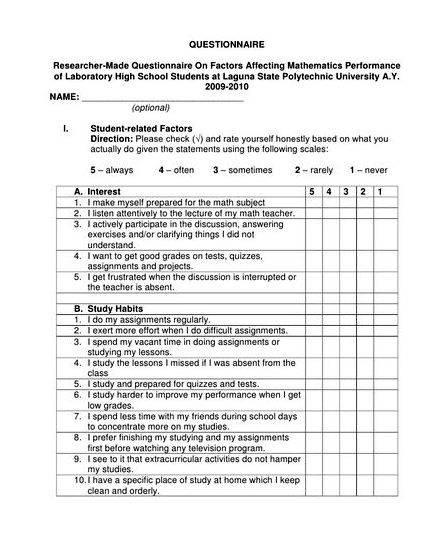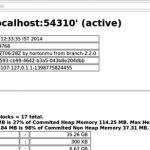The following article is a sample dissertation methodology on the following dissertation topic: Impact of Technology on Recruitment in UK Retail Banks: A case study of Lloyds Banking Group.
The methodology depicts a mixed method research, using quantitative surveys and semi structured interviews.
Table of Contents
a. Research Philosophy:
The social world of banks and graduates upon which this study is based exists externally and are not related to the researcher; therefore they would be measured through objective methods rather than being inferred subjectively through reflection, sensation or intuition (Easterby-Smith, 2002). This study would therefore adopt a positivist approach as credible data could only be derived through quantitative analysis of phenomena observed (Saunders et al, 2007). The social interpretivism philosophy, which aims to study and reflect on the inner feelings of participants, is not being utilized in this study, due to the study’s research objective, which is to ascertain the effectiveness of online recruitment in an organization. Details regarding effectiveness are measured using objective means (such as increase in candidate application and reduction in costs), thereby warranting a positivist approach.
b. Research approach
Due to the positivist nature of the research, this study would adopt a deductive approach (Saunders et al, 2007). This approach represents the most common view of the relationship between theory and research and results gotten from this approach are developed through logical reasoning (Bryman and Bell, 2007). The data findings would be compared against existing literature to ascertain if they concur with what has already been published in the field of online recruitment.
c. Access
The ability to gather primary data during this study was dependent on gaining access to an appropriate source within the organization. The level to which this source is appropriate relies on the research question, related objectives and research designs (Saunders et al, 2007). Therefore, the researcher, as a friend of an employee within the organization, was in a favorable position to get access within the organization.
I contacted a friend of mine who currently works within graduate recruitment at Lloyds TSB, and discussed the prospects of my dissertation. She spoke to several of her colleagues on my behalf and they agreed for me to conduct telephone interviews with 4 members of the graduate recruitment team, some of which had been there for an average of 5 – 10 years (reasons expatiated further in this chapter). Due to the non-intrusive nature of my research, there were no objections or limitations raised by the participants with regards to the questions asked or the purpose of the study.
d. Research Strategy
This study would adopt a case study strategy in answering the research question. Robson (2002) asserts that the case study strategy would be useful if the aim of the study is to gain a rich understanding of the research perspective and the process being endorsed. Therefore as this study aims to understand the recruitment process within Lloyds TSB and also any benefits associated with online recruitment, a case study would be most effective.

Two separate yet parallel approaches would be utilized in this study, and are outlined in the table 1 below.
Table 1: Research Strategy
i. Quantitative Questionnaire
Quantitative methods are mainly used in the data collection process of research. It involves data that is either in the form of, or expressed as numbers (Easterby-Smith et al, 2008). The quantitative questionnaires were handed out to 10 graduates and undergraduates. The questionnaire was mainly designed with rating scale questions, where respondents were asked to state their opinion or preference for a particular question on a scale of 1 – 5. Secondary nominal data was also included in order to ascertain the respondent’s status, application activity and preference. The quantitative questionnaire distributed to respondents is outlined in appendix. Quantitative questionnaires are useful as the results derived are quantifiable and measurable against other variables in an objective manner (Saunders et al, 2007).
ii. Qualitative Semi Structured Interviews
Following the access grant to four members of the recruitment team within the organization, 15 – 20 minute qualitative telephone interviews were carried out. A semi-structured interview is a qualitative interview that is defined by a pre-set question guide. It aims to provide in-depth findings through informal discussions with participants (Collis and Hussey, 2003). This interview method was chosen over unstructured or structured interviews, because this study intends to answer the research questions by asking specific questions, but not so much (unstructured) that it generates useless data, and not so less (structured) so as not to miss out on any unanticipated information.
The interview questions in the semi-structured interview are in appendix. The themes utilized in this study were derived mainly from the literature review and were crucial in developing the questions that were raised during the study. The semi-structured approach also provided the researcher with the ability to probe answers. Answer probing was particularly useful in responses whereby more explanation was needed in order to fully understand the answers. Due to the recent adaptation of online recruitment, the semi structured interviews was targeted at members of the team who had witnessed or orchestrated the shift towards online recruitment, that way these respondents would be better able to answer questions that relate to the comparison of both methods.
Also, members of the online recruitment team being interviewed had different positions within recruitment and handled separate tasks. The questionnaires were given to them beforehand, when the approval was first sought, and each respondent chose the questions that they were more qualified to respond to. Therefore the research was such that all respondents answered some questions, while some others were answered by a particular individual because of their knowledge of that process. Table 2 outlines the respondent details and their interview theme.
Table 2: Interview Respondents and Questions asked
Each respondent were asked for their consent to interview, prior to the interview sessions, and also requested not to have their names mentioned so as to prevent any form of organizational backlash if the contents of the study were interpreted in any other non-academic form, and distributed. They have therefore been given fictional names, so as to make the research more readable.
e. Data Collection
i. Sampling Method
Based on the research objectives and the issues to be investigated, it would have been most appropriate if all recruitment staffs within the organization were interviewed. However, due to the time constraints and resource limitations inherent in this study, a non-probability sample of the population was selected. Saunders et al (2007) asserts that a non-probability sample is most often used when adopting a case study strategy. A non-probability sample, as described by (Oppenheim, 2000), is a sample in which the probability of each case being selected from the total population is not known.
The samples of graduates that were chosen to partake in the quantitative study are too small to constitute a probability sample of graduates within London or UK. Also, the number of employees within Lloyds who took part in the qualitative study was not high enough to constitute a significant portion of the recruitment department within Lloyds TSB. Therefore the study focused more on the quantitative facts of the perception of recruitment within the organization, as opposed to theories expressed in the literature review, and what graduates on the outside thought of online recruitment.
ii. Primary Data Collection
In collecting data that could be analysed using quantitative means, Easterby-Smith et al (2008) claims that researchers could collect either primary or secondary data. He further claims that though each of these means have their merits and demerits, the collection of one’s own data gives control over the structure of the sample and the data obtained from each respondent. It also gives greater confidence that the data collected would match the research objectives.
The researcher therefore chose to collect primary data from 20 graduates using questionnaires distributed-in-person to each respondent. This was done amongst friends and colleagues within the university who have utilized online recruitment systems. Data from the semi-structured interviews would be collected using a tape recorder, and the conversations with all four employees would be transcribed word for word, and expression for expression. The advantages inherent in this approach is that it allows the researcher to document and see patterns in words and emotions that would not be available if other forms of interviews were conducted.
f. Analysis of Research Findings
i. Quantitative Data
The quantitative data collected during the course of this study, whilst still in its raw form, is described by Saunders et al (2007) as being useless and conveying little information to most people. Univariates, which are total sample distributions of one variable at a time (Oppenheim, 2005) was utilised in analysing the frequency and percentage occurrence of each variable; including both ordinal and nominal, category and rating scale questions. However an indepth correlation or bivariate analysis was not conducted due to the low number of graduate respondents, and also due to the fact that the study was mainly concerned with the viewpoint of the organization, and not necessarily that of the graduates. Results would be analysed using Excel and graphs would be drawn out to analyse all data with the aim of comparing them to the qualitative study.
ii. Qualitative Data
Yin (2002) suggests that in studies whereby the research question has been formulated based on the literature review; these theories that have been used in the postulation of the research question could also be used in analyzing the findings. Thereby suggesting that a deductive approach to data analysis would be essential for theoretical driven studies.
Based on these arguments, this study analyzed the qualitative findings using deductive methods. The findings from each respondent and questionnaire theme were analyzed according to the literature review topics discussed. In the instance whereby different respondents had something to say about a particular issue, all their opinions were recorded and taking into consideration in the analysis of findings. A fact sheet of all findings according to the theory is illustrated in chapter 4. Full transcripts of the interview are in the appendix.
The pattern matching procedure, as postulated by Saunders et al, (2007), would be utilized in this deductive analysis. It involves predicting a pattern of outcomes based on theoretical propositions. These propositions are thereby analyzed in the data analysis process. This procedure involves the development of an analytical framework, utilizing existing theory, and then testing the adequacies of the framework as a means of explaining the findings (Saunders et al, 2007). In the instance where a pattern is found as initially predicted, it would be evidence that suggests that there is indeed an explanation for findings.
g. Ethics
Blumberg, et al (2005) describes ethics as referring to the appropriateness of one’s behaviour in relation to the rights of those who become the subject of a research project. A number of ethical issues have been identified and raised with respect to this study. The issues, and steps taken to alleviate such issues are discussed below:
- The company may be secretive about some aspects of its online recruitment, such as the quantity of graduates and marketing techniques to attract graduates, which it may not like its competitors to know about.
- Employees responding to semi structured interviews may not be so willing to discuss their personal opinion of the bank’s recruitment system, or the quality of graduates received through their channels, in case their response does not really conform to the brand and reputation that the organization is trying to build (for instance, the bank may pose as an equal opportunity organization that employs from diverse backgrounds, whereas they mostly only recruit students from top Oxbridge universities with a certain background). Information such as this could pose difficulties if the bank eventually decides to broaden its pool of candidates and employ people from varying backgrounds.
Apart from these ethical considerations, no other ethical dilemmas have been found with relation to this essay. Therefore, in order to alleviate these issues, the questionnaire and interviews would be designed in such a way that it does not offend, harm, provoke or stress any of the participants in any way. Questions asked would be non-instrusive as no personal information about names; age or post would be requested. Information about specific applicant quality and demographics of applicants’ recruitment would not be sought.
Also, in terms of graduate questionnaires that have been distributed, some candidates may think that answering these questions and including personal details may impede or even benefit them when applying to said organizations. Therefore the questionnaires would fully state that it is an academic research and in no way constitutes a study conducted by the organization.
h. Limitations
- The major limitation of this research would be gaining access to graduates who have gone through online recruitment systems and applied specifically to Lloyds TSB. Graduates that have applied to the bank are diverse both in culture and geography. Therefore this study would be limited in not being able to survey a probability sample of graduates who have either used online recruitment or specifically applied to Lloyds TSB in the past.
- The willingness and capacity of staff to answer questions with relation to graduate recruitment is also impeded. Some staff may not be willing to discuss sensitive issues such as their views, some may be unwilling to discuss online recruitment in any capacity to an external researcher such as myself, while some may not have the relevant experience required to answer most of the questions raised in this study. Therefore the list of participants has been limited to 4, which in no way represents a probability sample of the recruitment workforce within the organization.
- There is also a secondary limitation with regards to the experience of those staff that participate in the interviews. The ideal participants would typically have been working in recruitment for over 10 years, and would have witnessed and participated in the transition from traditional to online recruitment within the organization. However, only two of the participants answering this questionnaire are ‘ideal candidates’, the other 2 have been working within recruitment over the past 2 – 3 years and were in no capacity to discuss the transition between traditional and online recruitment. However, their views were still helpful and contributed significantly to the findings of this study.
- This study did not incorporate recent events such as the merger between Lloyds TSB and HBOS. It also did not include the recent government bailout and financial crisis affecting most UK financial institutions. This information could have impacted on the quality of graduate applications that the organization received within the past 3 years, and could pose a shortfall in the information gathered. However, including this information would have extended the limits of the study, beyond the word count and capacity currently accepted.






 Harvard creative writing phd inmontereal
Harvard creative writing phd inmontereal Writing your first hadoop program
Writing your first hadoop program Writing my first novel tips and toes
Writing my first novel tips and toes Nafisa haji the writing on my forehead itches
Nafisa haji the writing on my forehead itches My satirical self wyatt mason summary writing
My satirical self wyatt mason summary writing






